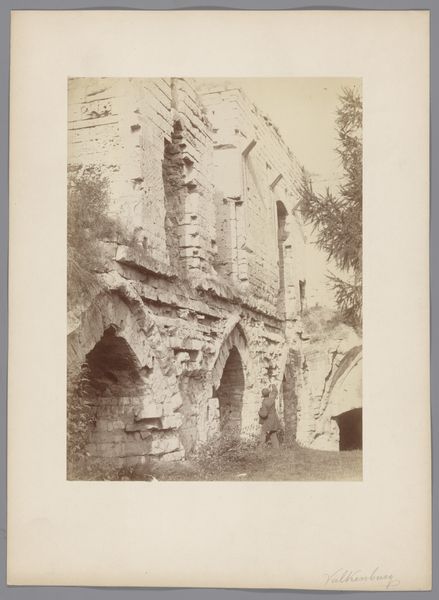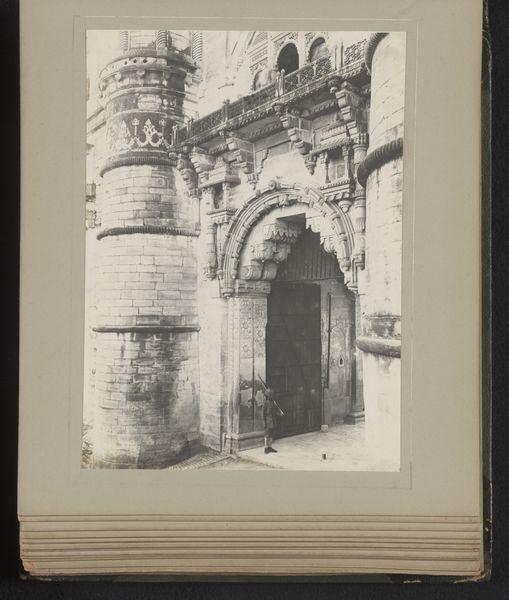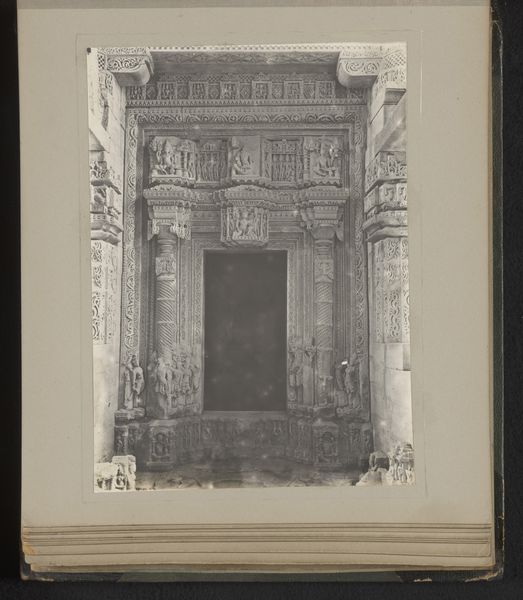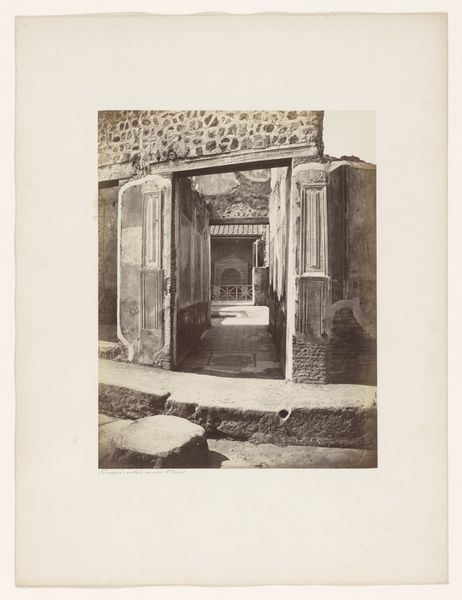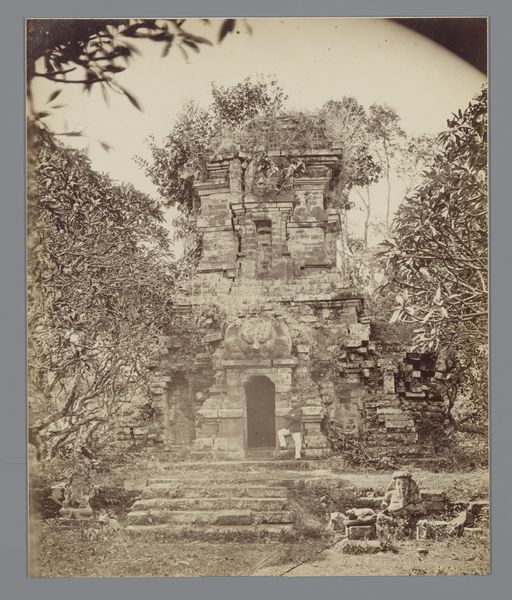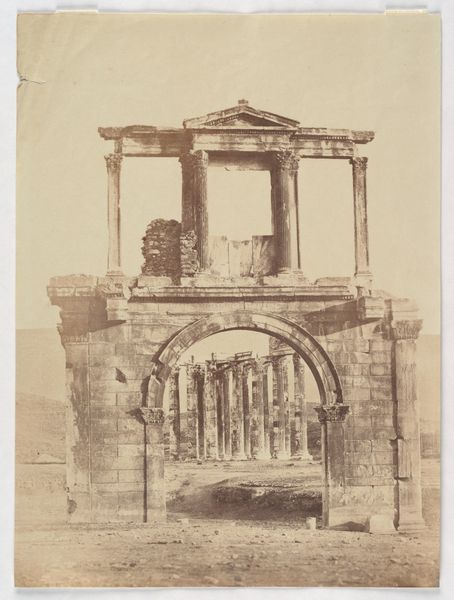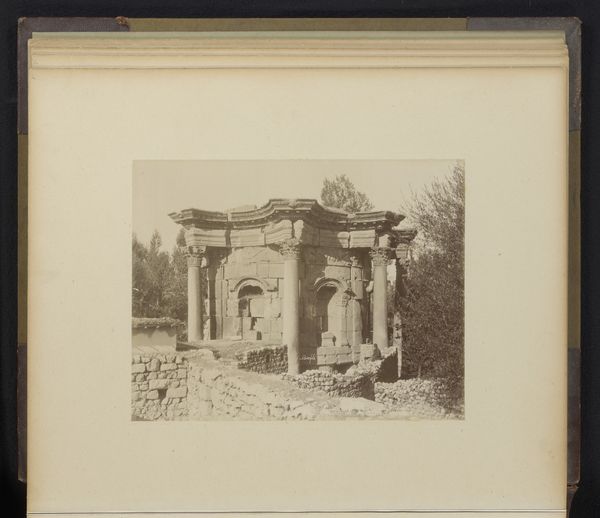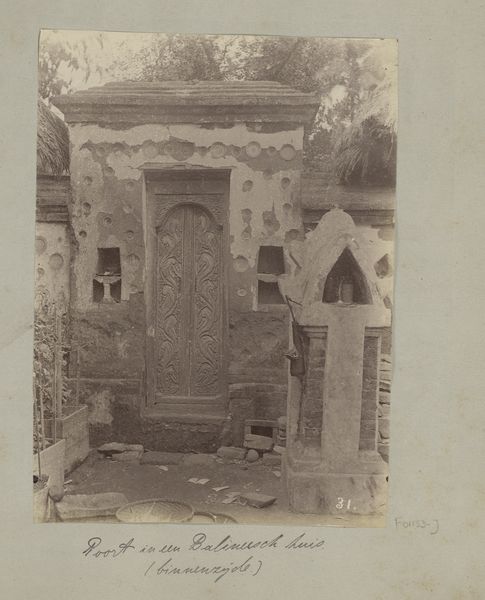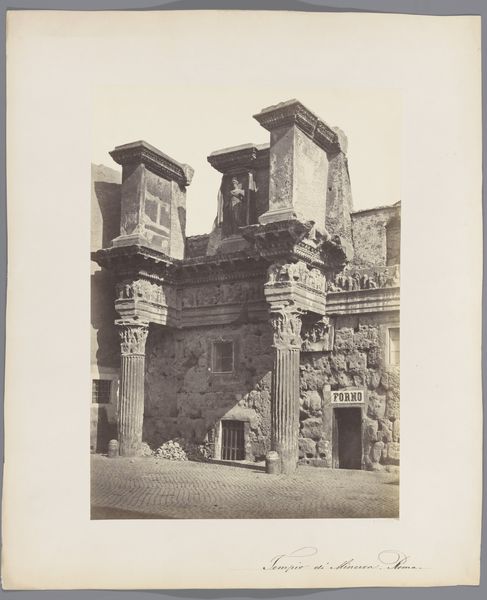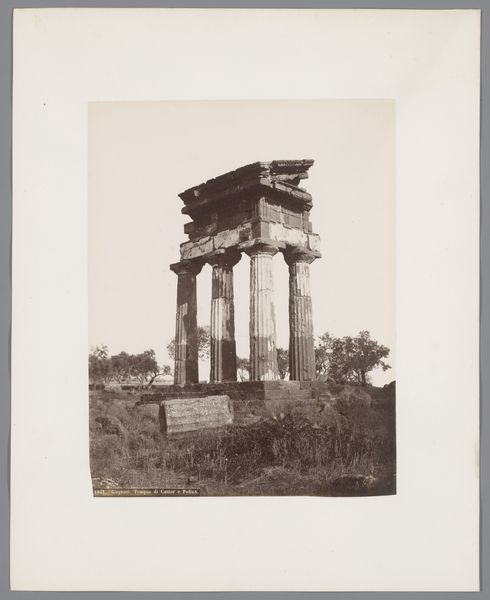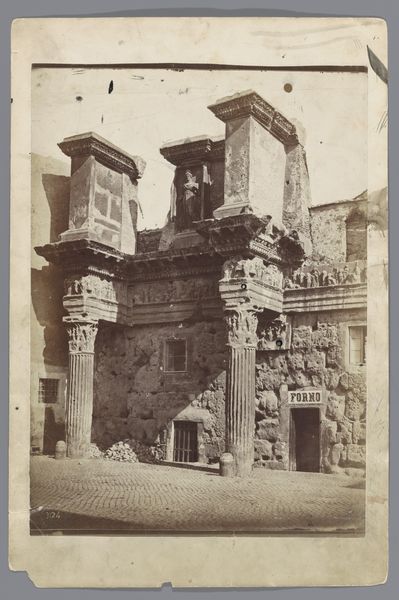
print, photography, architecture
# print
#
sculpture
#
asian-art
#
landscape
#
photography
#
architecture
Dimensions: height 206 mm, width 152 mm
Copyright: Rijks Museum: Open Domain
Editor: This is a print titled "Gezicht op de Chaturbhuja Tempel" by K.H. Mawal, dating back to around 1900. I'm really struck by how the architecture seems to almost emerge from the rock face itself. What's your interpretation of this image, particularly given its historical context? Curator: This photograph provides a glimpse into the colonial gaze and the representation of Indian architecture at the turn of the century. Consider the role photography played in shaping Western perceptions of the East. How do you think Mawal’s position as presumably an Indian photographer might complicate that dynamic? Editor: That's interesting. I hadn't considered that. Perhaps he's trying to capture its spiritual essence for a local audience, while also fitting into a format accessible to a Western one? Curator: Exactly. And note how the framing emphasizes the temple's stillness and monumentality. This aesthetic often served to exoticize the East but also, importantly, to categorize and document, turning lived spaces into objects for study and collection. The black and white photography flattens the complexity, making the structure itself a spectacle for the viewer, what do you think? Editor: I see what you mean. It's presented almost like an archaeological find rather than a living place of worship. I guess the print form also makes it accessible, reproducible, and able to spread these images. Curator: Precisely. These images circulated widely and influenced colonial administration as well as artistic and architectural movements in the West. Recognizing these photographs as historical documents reveals the complex power dynamics inherent in visual representations. Editor: Wow, I hadn't thought about it in terms of power dynamics. I guess I was so focused on the beauty. Now I see there’s a lot more at play. Curator: Absolutely, recognizing that tension allows us a more critical and nuanced understanding.
Comments
No comments
Be the first to comment and join the conversation on the ultimate creative platform.
